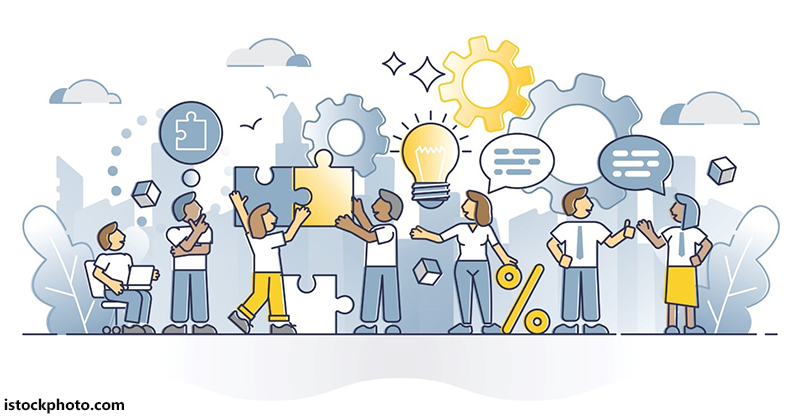
Any organization that attempts to serve people in any way—A hospital, an automotive service center, a mom-and-pop candy shop or a big box behemoth, a family-owned bank, a public library, a doctor’s office, an automotive manufacturing facility like GM, a church, temple or other place of worship, a grocery store, or any other offering of product or service—is most effective when the organization adopts a culture of engagement says Forbes. In the coming weeks, I will address various aspects of engagement essential to a university, but equally important in any of the enterprises mentioned above if they are to effectively serve the people who come calling.
Each of these enterprises may have different purposes and expectations, but quality follows when people pursue excellence in service free of stereotypes according to Bruce Jones of the Disney Institute in the Harvard Business Review. Jones suggests “Disney’s Approach to Quality Service” provides a simple but powerful insight that “significant service differentiation can occur when an individual organization ruptures a widely held industry stereotype.” Risky business. On a university campus this simply means treating every faculty member, student and visitor to the campus with dignity and respect based on their inherent worth and personhood. Nothing will undermine the quality of what we offer students more quickly than stereotyping them, and students, in turn, who stereotype institutions overlook distinctiveness according to The Atlantic. It’s a two-way street.
A second aspect of Disney’s approach stipulates: “Service design emanates from a profound in-depth understanding of your organization’s purpose, customer, and business and economic reality.” Universities are businesses with an educational mission/purpose. Some within the university environment look with disdain at the idea that students are customers or that faculty members are service providers or that public institutions should be free of any financial constraints or concerns because the state should support educational activity for its highly regarded common benefit. There is enough truth in each statement to cause drift away from primary purpose. Ultimately, the common purpose of the whole university organization must be sought out and well understood by all seeking to satisfy the aspirations of students. Our goal at West Texas A&M University is to help create engaged citizens through the application of knowledge, critical thinking, and vocational skills to serve something larger than oneself. This is a noble pursuit according to The Heritage Foundation.
Meeting people’s aspirations requires adaptability. The circumstances, the people, and the nature of the services provided are continuously in flux. No two people are the same. In larger organizations bureaucracies tend to overpower adaptability for the cause of consistency which can be the enemy of personalized responsiveness. This is especially challenging in public organizations of every type when consistent treatment is the wall of seeming fairness behind which personal responsibility hides. On the other side of the coin, in mass production environments, the goal for product consistency is the beginning of quality. Steve Jobs, with his attention to detail, became the prince of precision according to Business Insider. The demands for exactitude create a challenging work environment. People who work in organizations that demand precision must allow adaptability. To foster improvement, to increase quality, and to provide the best service requires both precision and adaptability. In universities, precision and adaptability should create engagement so faculty, staff and university leadership work together in an environment that seeks to serve students one-at-a-time.
Empowerment is required at every level of any organization if a positive culture of working towards a desired end is to be achieved. “Giving employees autonomy is critical for innovation, performance, and motivation,” according to Harvard Business Review.arvard Business Review. It does not mean that everyone runs in every direction doing whatever they deem appropriate. Rather, it means clear goals, such as those established in a long-range plan developed by seeking the input of many individuals inside and outside of the organization, cast a shared view and aspiration for the organization. WT achieved this through our long-range plan, WT 125: From the Panhandle to the World. The University’s commitment to become a regional research university requires empowerment from both inside and outside. The focus in the long-range plan was expressed clearly in Maxim Eight: Engage and Empower Excellence in Human Capital. The stated aspiration was, “Faculty and staff are the University. The University must recruit, reward and retain the very best. The sine qua non of all faculty and staff at every level must be teaching and the support thereof in its diverse manifestations.” True when the plan was penned by hundreds of individuals six years ago, and true today. Clear purpose, precision, and adaptability empowers individuals to do their best. Empowering individuals necessitates organizational tolerance for risk which becomes part of the working culture.
These ideas and others will be addressed in the coming weeks. I believe their application is universal in human organizations, and will mark a culture at West Texas A&M University that powerfully engages all people associated with the organization, inside or outside, in the pursuit of excellence.
Walter V. Wendler is President of West Texas A&M University. His weekly columns are available at https://walterwendler.com/








On the mark again, Dr. W. We ALL in the engagement business. Knowing that truth is only the first step toward achieving same.
The late Dr. Phil Schlechty would advise us, also, that the level and quality of learning is directly proportional to the level of engagement. Indeed!
Thanks for pushing our thinking, Doc.